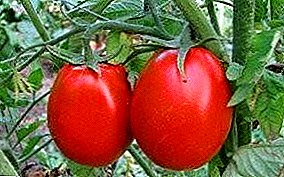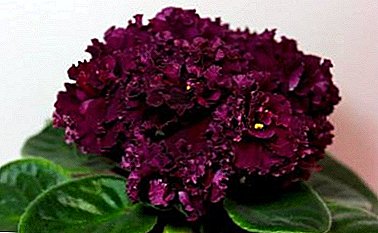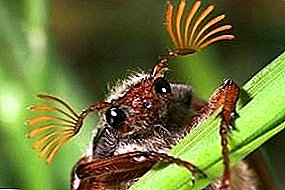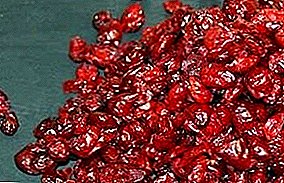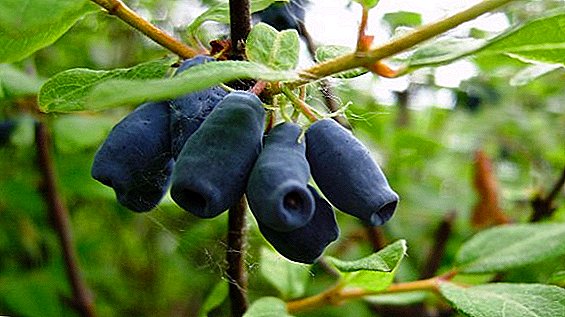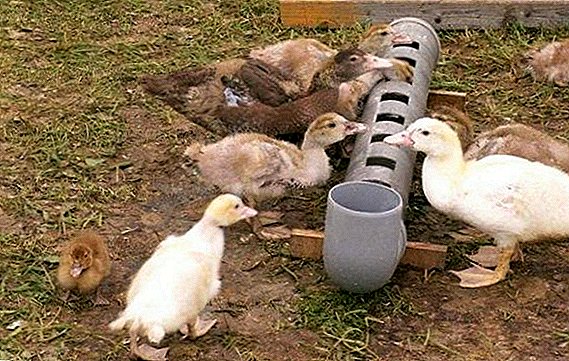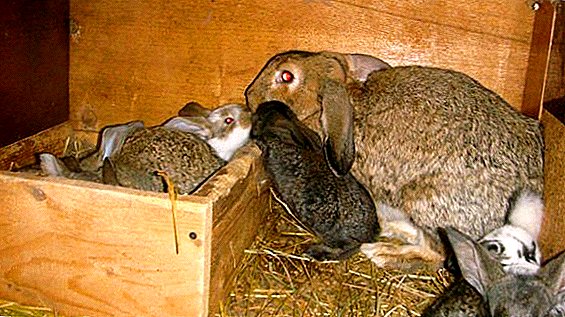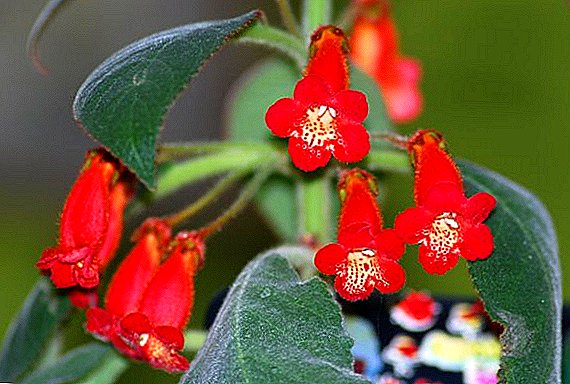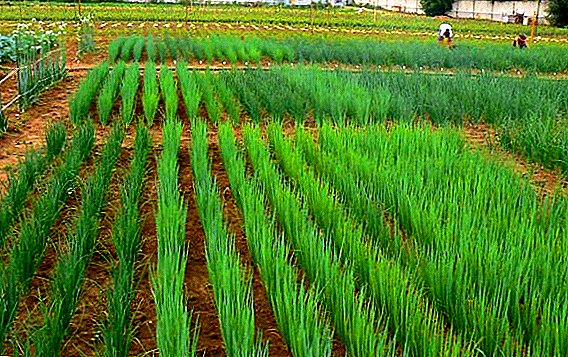 Tips on how to grow onions, useful for novice gardeners and gardeners, although it may interest and useful and experienced owners. Onions - an indispensable vegetable on our table. It is impossible to imagine some dishes without him.
Tips on how to grow onions, useful for novice gardeners and gardeners, although it may interest and useful and experienced owners. Onions - an indispensable vegetable on our table. It is impossible to imagine some dishes without him.
It is used fresh, dried, used to make sauces, pickles, seasonings, preservation. Growing onions is not difficult, but you need to follow all the preparatory steps and choose the right place for the onions, taking into account the previous crops.
Did you know? The name "onion" comes from the external similarity of onions with another vegetable. - turnip
Onion: description and popular varieties
Onions - a perennial vegetable of the Onion family. The fruit is an onion covered with thin dry skin (husk). Pulp - film with vertical membranes, specific sharp or sweet-sharp taste and a characteristic smell. And the husk and the pulp depending on the variety come in different colors - yellow, sand, amber, lilac, purple, gray-white, white. 
Did you know? Onions as a vegetable crop have been known for more than 4 thousand years.The following varieties are popular today: Stardust, Rostovsky, Carmen, Kupido, Lugansky, Danilovsky, Myachkovsky, Odintsovsky, Shetana, Strigunovsky, Bessonovsky, Hiberna, Centurion, Stuttgarter Rizen. There are early and later varieties among them, and before growing onions, you need to decide on the variety and term of maturation of a particular type of onion.
Where to plant onions: the requirements for soil and lighting
Onions need to be planted on dry, low-lying groundwater, open, without shading fertile areas. Onions like loamy soil, enriched with organic matter. The soil should not be acidic, its optimum pH is 6.5-7.8, with high acidity the soil is lime. Liming is always just in the fall (!), And not in the spring before planting.
Good and bad bow predecessors
Growing onion turnips will go well after peas, pumpkin, potatoes, tomatoes, cabbage, beans and sideratov. You can not plant onions after carrots, cucumbers, garlic and onions. But the carrots and garlic planted next door will be useful for growing - some pests of onions are scared away by the smell of carrot tops and garlic. 
Peculiarities of onion cultivation: time, preparation of planting material, scheme and depth of planting
The time of onion cultivation is largely dependent on the weather - it can keep up to the middle of summer, and to the end of summer, and even to the beginning of autumn. But on average, the cultivation of onions on a turnip from seedlings lasts 75-90 days.
Onions are planted at a soil temperature not lower than + 12 ... +13 ° С - this is approximately in the first days of April. Planting it in early or mid-April, the crop can be harvested in late June - early July. The planting pattern is usually 8 by 20 cm or 10 by 25 cm, depending on the large-fruited variety.
Important! Before planting onions, seed must be prepared.
Agricultural technology of onion cultivation direct sowing
Onion bulb, the cultivation of which is carried out from seeds, involves planting and caring for beds that are different from planting onion sets. Bulb seeds, which are called Chernushka, before sowing check for germination. For this take 1 tsp. seeds, moisten with water and wrap them in a damp, loose cloth. After a few days, it is checked whether the sprouts have appeared, if so, the seeds are viable. 
Did you know? It is advisable to sow one-year chernushka. Although it is believed that onion seeds retain their germination for 2 years.Agricultural technology of onion seeds: Before seeding, the chernushka is heated for 20-30 minutes in water at a temperature of 40-50 ° C, then they are soaked in water at room temperature for 2-3 days, and the water is changed once a day to avoid stagnation.
After the water is drained, the seeds are laid out in one layer between two woven napkins, thin towels, and after 2-3 days, when the noose dabs and shakes, they start sowing. Sow in a well-pre-drilled soil in advance into the furrows about 1-1.3 cm deep, but not more than 1.5 cm, at a distance of seeds from each other - 2 cm, then sprinkle with earth and compact a little.
After a bed, they mulch (with humus, peat) and neatly pour it from a watering can with a sprayer, and from above it is covered with a film, which is removed when the first shoots (seedlings) appear. As the two true leaves grow and appear in onions, they sow the leaves, leaving a distance of no more than 2 cm between plants. The next thinning is carried out after the appearance of four true leaves - now they leave a distance of 5-7 cm. 
Important! Timing thinning must be strictly followed. With late thinning, the crop will be shallow.Watered onions in the first month after germination - once in 6-7 days. After watering - mandatory loosening.
How to grow onions through sevok
Growing onions, you need to know what is onion sets. These are annual small onions - 1.5-2 cm in diameter, grown from seed-grains. Sevok is then used for the subsequent cultivation of large fruits.
To get a good quality onion, first grow a seedling, the cultivation of which can be carried out both in open ground (onions are planted in winter) and at home - in small containers on a windowsill.
Agrotechnics of onion cultivation from sevka: before planting, the onions are heated several times, leaving near any heating device, up to a temperature of + 20 ... +22 ° С, then up to + 35 ... +40 ° С - they maintain a temperature of 3-6 days. Or hot water no higher than + 45 ... +50 ° С should be filled in for 20-25 minutes, then remove the onions and pour in cool water with a temperature of + 10 ... + 12 ° С, and then dry with a napkin and let dry at room temperature. 
Important! Temperature effect is necessary for the bulbs - thanks to this, it is possible to avoid the formation of arrows in the bow.Immediately before planting align the beds. If the ground is dry, it is slightly moistened. Then they lay grooves-grooves with a depth of 4.5-5 cm and stick sevok, which is completely sprinkled with soil and lightly rammed. Watering the bed at first is not necessary.
How to care for onions in the garden
Basic care - it is weeding, watering, loosening. It does not need thinning of sevok, as it is initially planted at a sufficient distance of the bulbs from each other.
Did you know? Onions in their raw form when eaten have a pronounced antimicrobial effect, help to increase immunity, prevent cardiovascular diseases.
Soil care and weed control
Weeds are spat out between the rows, and after sprouting and around the onion bush. Loosen the soil after each irrigation to a depth of no more than 5 cm. 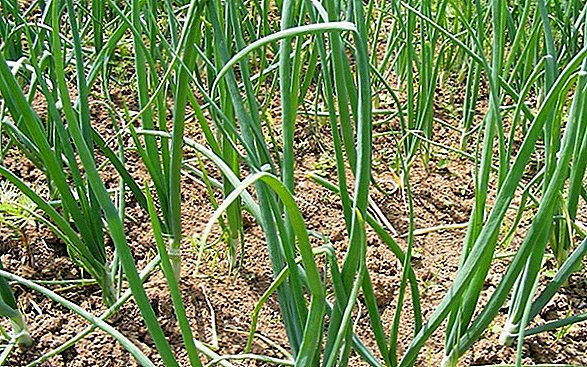
Watering and feeding onions
On the question of onion bulb how to grow properly - with abundant watering or without? Onions - a culture that does not really need water. Watering it, of course, is necessary, but very moderately - in hot weather, be sure to at least once every 5-6 days. On other days - 1 time in 8-10 days. Sometimes onions can be grown without any watering at all - if summer is moderately warm and occasionally rainy.
Important! Must follow the rules how to care for onions before harvesting. Approximately 30-35 days before harvesting from the garden watering (as well as fertilizing) onions is stopped.Gardeners are often interested in whether and how to grow large onions without dressings. In principle, yes, if the soil is fertile enough. But still often onions are fed for better growth and large-fruited.
On scanty soils, onions are fed 2-3 times - the first time at a sheet height of 7-9 cm, the second time - after 2-3 weeks, the third - after another 3 weeks. For dressing, poultry manure diluted with water, mullein (100 g / 5 l of water at a flow rate of 2.5 l / 1 sq. M), urea, potassium chloride, superphosphate (10-15 g / 2 sq. M) are suitable. 
Growing problems, major pests and diseases of onions
The main pest of onions - onion fly, the larvae of which eats away the flesh of the fruit from the inside, after which the onion rots and the onion feathers wither. At the first signs of damage, diseased plants are pulled out and destroyed.
Prevention of onion flies carry out inspection of the sevka before putting it in storage and disembarking (the onions are destroyed), planting carrots and garlic next to the onions, and digging the ground deep in the autumn - up to 30 cm to kill the parasite wintering in the soil from frost. It is also recommended for the prevention of watering the beds with salt water - 300-400 g of salt / 10 liters of water or tuck the soil in proportions of 2: 1 with a mixture of sunflower ash and tobacco dust.
Another pest is weevil beetle. Both the larvae and the beetles feed on the onion feathers, the lesions caused by them lead to decay of the foliage and a decrease in the yield of the onions.
Prevention of infection with covert - regular loosening (its larvae, appearing on the surface, die). The landing of a nearby bait onion, which is attacked by a weevil and which is then destroyed along with the parasite, is effective.
Parasitic onion tobacco and onion thrips and shovels. Prevention of their occurrence - digging into the winter of the soil at least 30 cm, regular loosening, treatment of onion leaves with infusions of celandine, bitter pepper, white mustard, tobacco, and wormwood. Or you can use garden-insecticides (agrochemicals), designed against these parasites.
Onion: harvest
Before you pick onions from the ground, make sure that it is ripe. It is simple to make it - its leaves must be completely shriveled and drooping, and the top flakes of the bulb dry. Pull the bow along with the horses and foliage (tails), without breaking it. 
Important! The bulb onion, received from a sevka, at the correct storage possesses high keeping capacity - up to 220 days.The gathered onions are left under a canopy or with sufficient ventilation indoors for 2-3 weeks. And only after that remove the roots and tails, or weave the bow into a braid (circle). Putting in storage, it is better to sort onions by the size of the bulbs. Store it at + 16 ... +22 ° C (at almost room temperature) suspended in braids or boxes and baskets. Onions can be stored at a lower temperature up to +1 ° C - in the cellar, basement, attic, the main thing - Do not allow during storage dampness and freezing temperatures.
It's all about the onions, which when grown with the right approach should not cause any difficulties.



